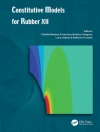As a new and rapidly growing science, the applications of ultrasound methods in environmental technology hold a promising future. Compared to conventional methods, ultrasonication can bring several benefits such as being environmentally friendly (no toxic chemical are used or produced), low cost, and compact, allowing on-site treatment.
Besides an overview featuring the background behind ultrasonic technology, this brief summarizes the main studies and innovations reported in recent research that has utilized ultrasound methods in environmental analysis, water, and sludge treatment, soil and sediment remediation to air purification.
Table des matières
Introduction.- Ultrasound – Background Overview.- Water Treatment.- Sludge Stabilization.- Sediment and Soil Remediation.- Air Pollution Control.- Environmental Analysis. – Conclusion.
A propos de l’auteur
Mika Sillanpää, Faculty of Technology, Lappeenranta University of Technology, Patteristonkatu 1, 50100 Mikkeli, Finland
Thuy-Duong Pham, Laboratory of Green Chemistry, LUT Faculty of Technology, Lappeenranta University of Technology, Patteristonkatu 1, FI-50100 Mikkeli, Finland
Reena Amatya Shrestha, Laboratory of Green Chemistry, LUT Faculty of Technology, Lappeenranta University of Technology, Patteristonkatu 1, FI-50100 Mikkeli, Finland and Lehigh University, Department of Civil and Environmental Engineering, 13 E. Packer Ave, Bethlehem, 18015, USA












